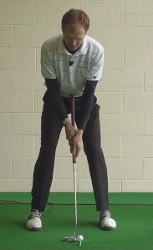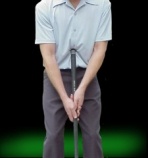
Golfers who switch from conventional putters to the belly style typically improve their efficiency on knee-knockers. With one swish of the blade, Keegan Bradley showed that the belly putter can be deadly from long range, too.
Bradley authored one of the signature moments of the 2011 golf season by draining a 35-foot putt on the 17th hole in the final round of the PGA Championship. The birdie propelled Bradley, then a rookie, into a playoff with Jason Dufner, which Bradley won for his first major title.
Bradley’s bomb was no fluke. As of September 2012, he ranked among the PGA Tour’s top 18 in the number of one-putts from more than 25 feet, the average length of each made putt, and the average total length of putts made per round.
Having used a regular-length putter most of his life, Bradley’s not concerned about hints that the game’s governing bodies may ban the use of belly and long putters, at least among pros. In fact, his technique is basically the same one he used prior to making the change shortly after turning pro.
Whatever the remainder of Bradley’s career holds, he’ll always be remembered as the first golfer to win a professional major using a belly putter. They may take away his favorite weapon, but they can’t take that distinction.
Bradley stood over his lengthy putt on the 17th hole at Atlanta Athletic Club in desperate need of a birdie. It seemed highly unlikely, though. He faced a treacherously fast, right-to-left breaker that few golfers had gotten close all day. Undaunted, Bradley swept back the blade and sent his ball trickling across the green, celebrating as it toppled into the cup.
He followed up by nearly holing an even longer putt on the 18th, settling for a tap-in par that earned him a spot in the playoff.

Bradley is somewhat unusual in that he stands well away from the ball, with his eyes farther inside the ball than his peers. This allows him to freely swing the putter without interference from his tall, lanky body.
How you can do it: If you currently use a belly putter or are considering it, adopt Bradley’s habit of placing the end of the club in the same spot every time. It may be the center or edge of your belly button, the bottom of your sternum, or elsewhere; the key is to be consistent.
In fact, that’s one of the belly putter’s big advantages – it allows you to set up with the exact same hand, shaft and clubface positions every time. Another key benefit: Stroke mechanics are minimized. Because the putter is anchored, the hands and arms serve only to move it back and forth through the ball, so it’s much harder to make an off-line stroke.






